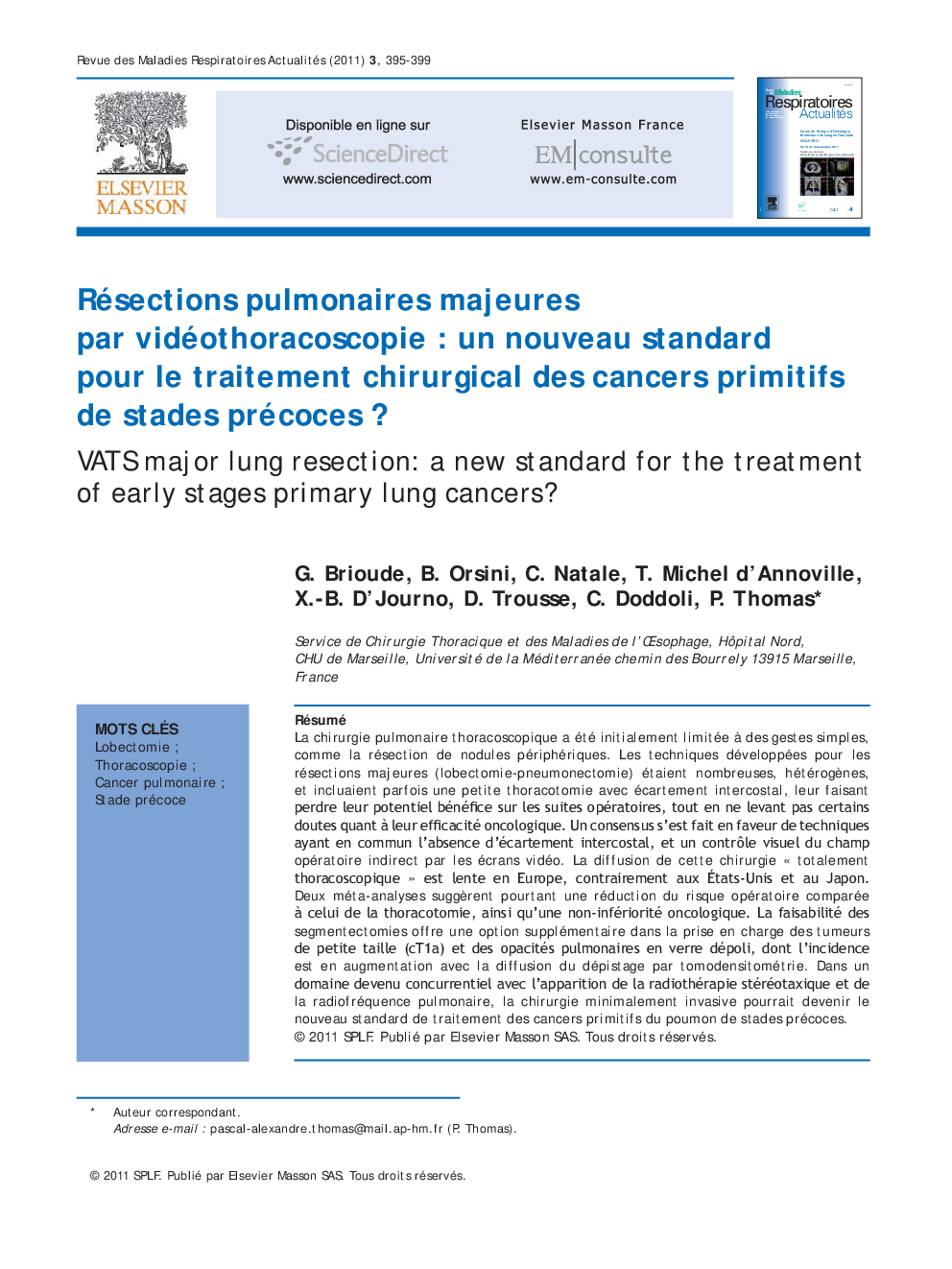| Article ID | Journal | Published Year | Pages | File Type |
|---|---|---|---|---|
| 4216112 | Revue des Maladies Respiratoires Actualités | 2011 | 5 Pages |
Abstract
Video Assisted Thoracic Surgery (VATS) was initially limited to minor lung procedures such as wedge resection of peripheral nodules. Techniques developed for major resections (lobectomy-pneumonectomy) are numerous, heterogeneous, and sometimes include a minithoracotomy with rib spreading, making them lose their potential benefit on the early postoperative course, without alleviating some doubts as for their oncologic efficiency. With time, a consensus was made in favor of techniques having in common the absence of rib spreading, and the visualization of the operative field through the video monitor only. This so-called “full thoracoscopic” surgery expands slowly in Europe, conversely to what is observed in the United States and Japan. Nevertheless, 2 meta-analyses suggest a decrease in the postoperative morbidity in comparison with open surgery, as well as an oncologic non-inferiority. The feasibility of VATS segmentectomies offers an additional option in the management of the small-sized tumors (cT1a) and glass round opacities of the lung, the incidence of which is expected to increase with the expansion of chest-ct screening programs. In the incoming era of stereotactic radiosurgery and radiofrequency ablation, VATS competes to become the new standard for the treatment of early stage primary lung cancers.
Keywords
Related Topics
Health Sciences
Medicine and Dentistry
Pulmonary and Respiratory Medicine
Authors
G. Brioude, B. Orsini, C. Natale, T. Michel d'Annoville, X.-B. D'Journo, D. Trousse, C. Doddoli, P. Thomas,
